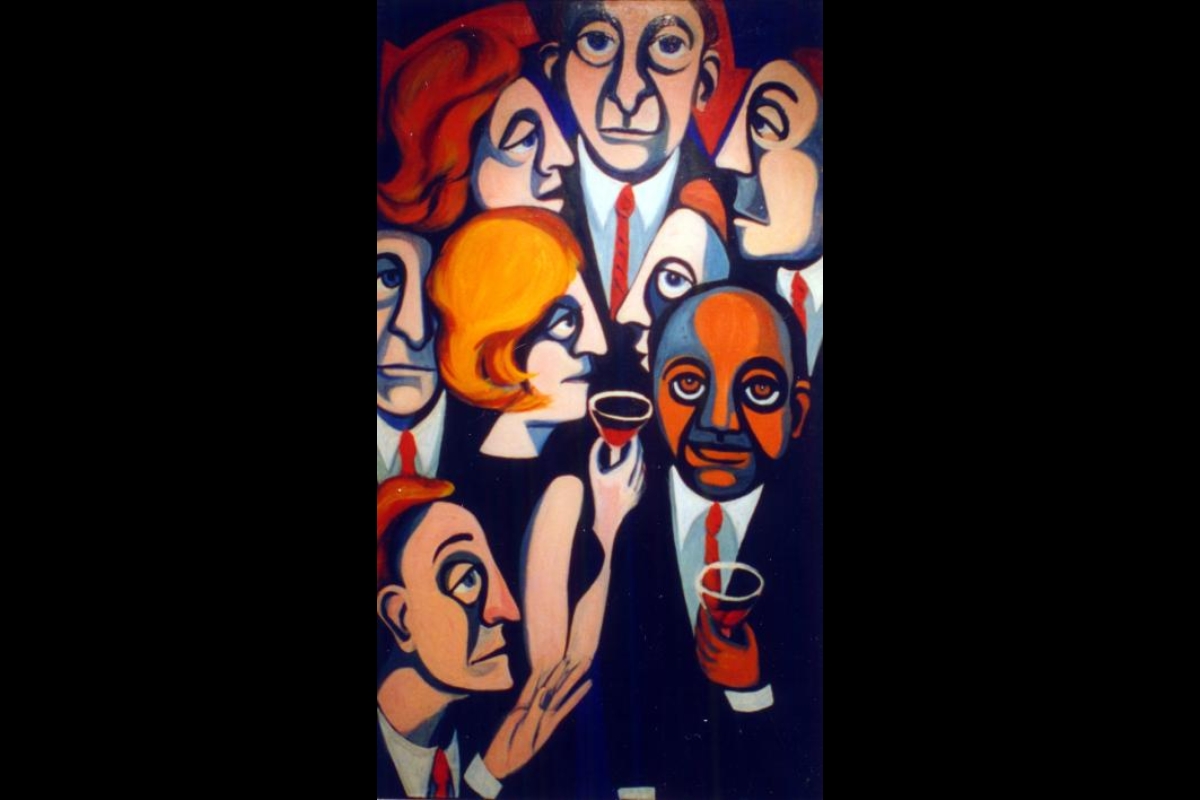The Other Mainstream: Selections from the Collection of Mikki and Stanley Weithorn opens Jan. 22 at the ASU Art Museum

Enrique Chagoya
General Merchandise(The Holy Family), 2000
Acrylic and waterbased oil, Amate on linen
48 x 48"
Photo courtesy of Herberger Institute for Design and the Arts.
TEMPE, Ariz. - A selection of 40 dynamic works that show an ongoing commitment to social and political issues and artists of color will be exhibited at the ASU Art Museum in The Other Mainstream: Selections from the Collection of Mikki and Stanley Weithorn, Jan. 22 - April 23. A public reception will be held Jan. 21 from 7-9 p.m.
The exhibition includes works by contemporary, well-known and emerging artists such as Leon Golub, Vik Muniz, Kara Walker, Jon Haddock, Faith Ringgold, Robert Colescott, Enrique Chagoya and Sue Coe, as well as historic pieces that show the roots of socially conscious artwork in the early 20 th century. The project includes a 48-page color catalog with an essay by ASU Art Museum director and chief curator Marilyn Zeitlin and an interview with the Weithorns by exhibition curator Heather Sealy Lineberry.
In 1988 the Weithorns began actively collecting contemporary art chosen by instinct and intellect, not art world trends. Their 300-piece collection is bold in its imagery and commentary on social issues and also reflects Stan and Mikki's individual career paths and shared values. Mikki Weithorn worked for 40 years as a speech pathologist and taught at Adelphi University in New York. Stanley was the first lawyer in the United States to specialize in the field of charitable tax law and has always devoted a significant amount of his time to social justice charities. The couple live surrounded by their collection in their two homes in Scottsdale and New York.
"Work by artists whose point of view is not derived from the mainstream may attract collectors who are themselves seeking an alternative to mainstream thought and action," says Zeitlin. "The Weithorns, who are vigilant in their skepticism about received opinion and refuse to settle for a status quo that does not reflect their principles, clearly value the social critique in the work they collect."
In Wanxin Zhang's Skateboarder (2000), the ceramic figure appears to be a traditional Chinese scholar, but he zooms into the contemporary world on a skateboard. In Barbie Visits the Tomb of the Unknown Indian , artist Richard Glazer-Danay uses humor to show how many remember the dead not as participants, but as tourists. Kojo Griffin's sculpture Untitled (elephant watching video, 2004) shows the Indian mythological god of knowledge, Ganesha, holding a remote control, surrounded by videotapes.
"The Weithorns are confident enough in their convictions to collect everything from emerging artists and folk art to internationally known and outsider artists," says Sealy Lineberry. "Although they collect a broad spectrum of art, social and political themes are a constant."
Additional artists featured in The Other Mainstream: Selections from the Collection of Mikki and Stanley Weithorn include: Robert Arneson, Belkis Ayón, John Bankston, Sandow Birk, Willie Birch, Brett Cook-Dizney, E. V. Day, Marita Dingus, Peter Drake, Marcel Dzama, William Gropper, Gottfried Helnwein, John King, Jacob Lawrence, Don Smith "Lelooska", Francisco Larios Osuna, Kerry James Marshall, Beverly McIver, Takashi Murakami, Justin Novak, Tom Otterness, Sabastiao Salgado, Sol 'Sax, Joyce Scott, Travis Somerville and Joe Tilson.
Vik Muniz will lecture in ASU's Neeb Hall, Feb. 15 at 7:30 p.m. Muniz is a photographer who works with unusual materials such as sugar, soil, string, wire, chocolate syrup and magazine clippings, to provocatively reconstruct figurative compositions that emerge in his final photographs. Originally from Sao Paolo, Brazil, Muniz currently lives and works in Brooklyn, New York and exhibits his work internationally.
The ASU Art Museum, named “the single most impressive venue for contemporary art in Arizona” by Art in America, is part of the Herberger College of Fine Arts at Arizona State University. The museum is located on the southeast corner of Mill Avenue and 10th Street in Tempe and entry is free. Hours are 10 a.m. - 5 p.m., Tuesday through Saturday and until 9 p.m. Tuesdays during the academic year. For more information, call (480) 965-2787 or visit the museum online at http://asuartmuseum.asu.edu.
Media Contact:
Denise Tanguay
480.965.7144
denise.tanguay@asu.edu

